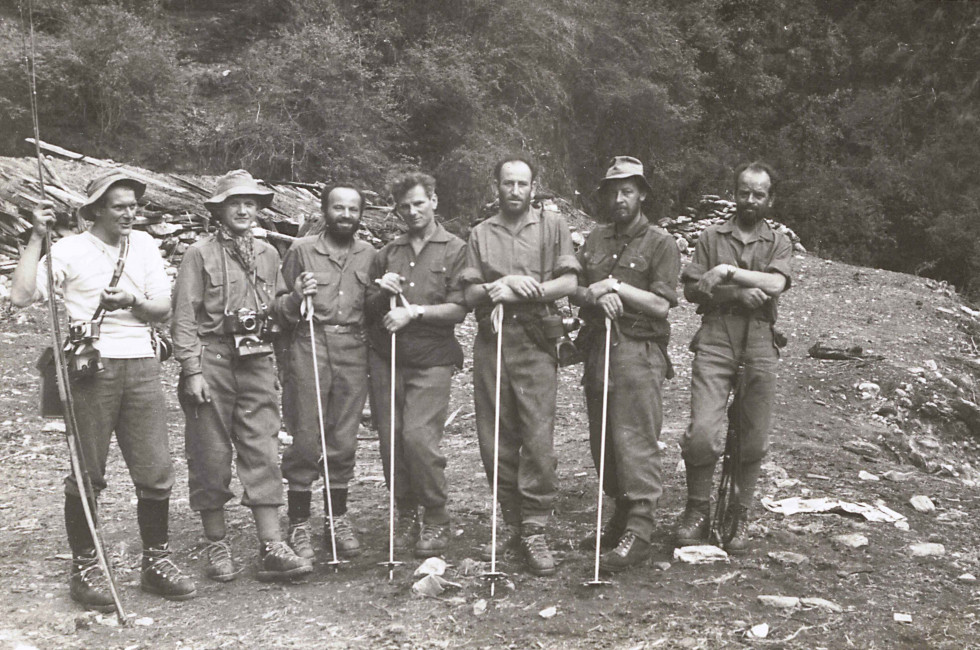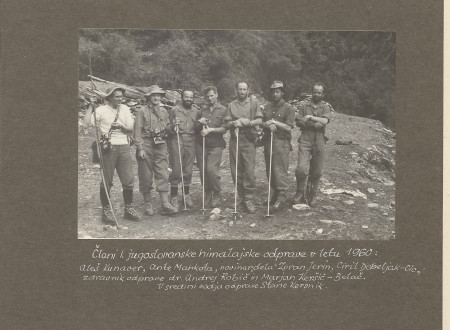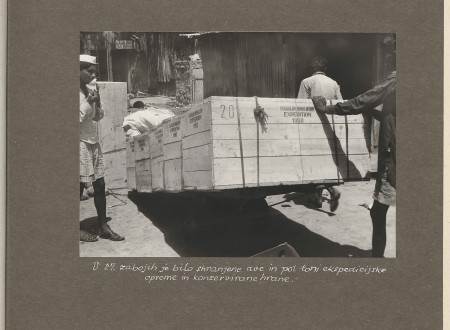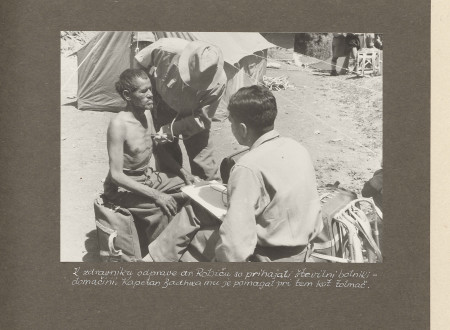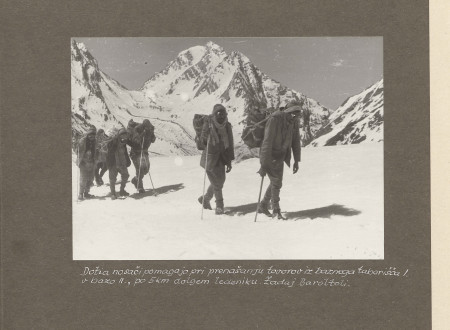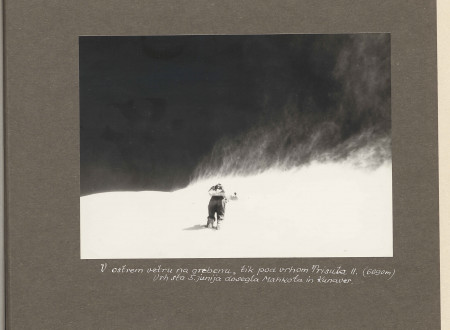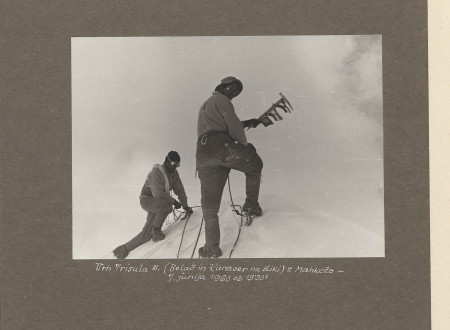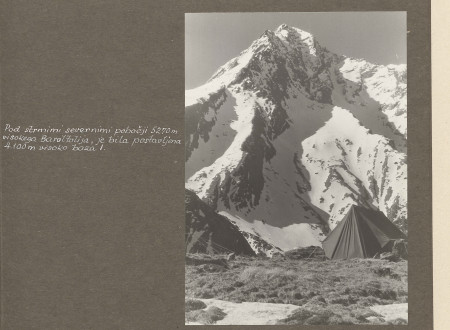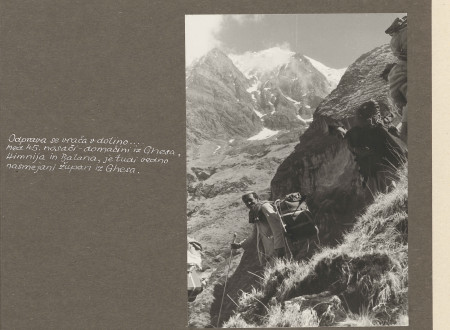From the Life in the Himalayas
Celebrating the 60th Anniversary of the First Slovenian Himalayan Expedition
This year marks the 60th anniversary of the first Yugoslav Himalayan expedition, which included seven Slovenian climbers: Ciril Debeljak, Zoran Jerin (journalist), Marjan Keršič, Aleš Kunaver, Ante Mahkota, Andrej Robič (physician) and the leader of the expedition Stane Kersnik. Although failing to complete their original goal of climbing the 7120-metre high peak of Trisul, the team nevertheless managed to ascend three new summits (Baraltoli, Trisul II and Trisul III), research by then the unknown valley of Kaliganga river on both banks, and climb the technically demanding ridge of Trisul Group.
Following an unsuccessful attempt to organize a large Himalayan expedition in the mid-1950s, the Alpine Association of Slovenia decided to invest in a smaller and less expensive expedition, whose goal was first and foremost to gain experience needed to organize any future Himalayan expeditions. The original mission was to climb the 7816 metre summit of Nanda Devi in the Indian part of the Himalayas. Since the autumn of 1959, the body in charge of organizing the expedition was the Himalayan Committee of the Alpine Association of Slovenia. Its task was to secure the funds and the equipment needed for the expedition as well as choose the members of the expedition. The material needed was provided mostly by the Yugoslav companies. The preserved long lists of equipment, which was hard to collect and prepare for the trip, include technical material (pipes, ropes, cables, shovels, tongs, nails, hammers, tents, mattresses, oxygen and butane cylinders), technical equipment (film and photography cameras, binoculars, exposure metres, weapons, radio receivers and transmitters), climbing, cooking, office material, personal belongings of the climbers, medicine and food.
Seven-member expedition with three tons of equipment began its 8000 kilometres long journey on March 20, 1960 in Rijeka, from where it took the ship Velebit to Mumbai. Since by the time of their departure the expedition still hadn't received from the Indian government the official permission for their climb of Nanda Devi, there was some real tension among the members of the expedition. The climbers trained every day on board of the ship; to retain the strength in their legs they gave each other piggyback rides and for strong arms they climbed the ropes that ran up the masts to which the captain resignedly commented that any climber appeared to make a better sailor than the real sailors. Aboard the ship they also received the news that the government of India gave its permission for the climb of the mountain Trisul, of which they did not have enough information but still needed to decide which route to take.
Once they reached India, there were a number of other obstacles to overcome as well: due to the strike of transport companies their luggage needed to be carried in carts pulled by teams of oxen or transported by means of handcarts. They also had to wait for a special permit to be allowed to move in the border zone and they were expecting another member of the expedition, assigned by the Indian government, to help them on their journey. All these complications caused them to lose eight to ten days in New Delhi. After much consideration they decided to approach Trisul from the south via the valley of Kaliganga river up to Bidalgwar glacier, which up to that point had still not been researched. On the glacier they set up their base camp at 4700 metres. From there twelve porters and the climbers themselves carried about 300 kg of technical equipment and food to their next base, situated at 5130 metres along the main ridge of Trisul. This was done at night, since daytime was too much of a danger because of avalanches. To acclimatise, they ascended the first Slovenian Himalayan peak, the 5000-metre high summit of Baraltoli (Debeljak, Kunaver, Mahkota).
Daily rhythm of the expedition was dictated by snow storms. Getting up before the dawn, they climbed ice-bound snow and spent afternoons in their tents, waiting for the storms to pass. There were some issues with establishing radio connection Also problematic was the lack of porters and the fact that, previous to the expedition, the climbers on the team had not spent enough time together just getting to know each other. All their food donated by local Yugoslav companies “survived” the tropics and remained edible, and the menus and recipes for meals were prepared by the Ljubljana Central Institute for the Progress of Housekeeping. Most of the food was conserved (meat, vegetables, fruit), dried (vegetables, fruit) or powdered (eggs, milk). What the members of the expedition missed most in their diet were fresh vegetables and canned fruit. The physician noticed that at high altitude they seemed to prefer stronger tasting food (like fish fillets), while sweets remained uneaten. Many longed for sour cabbage as well. All of them, however, ate with healthy appetite a couple of wild goats which they managed to shoot by chance and which were a welcoming change in their otherwise rather monotonous diet, as observed by the physician and the head of the expedition. In any case, the whole team experienced some indigestion when they were not being careful with their consumption of food or non-chlorinated water.
While most of the expedition members climbed, their physician took care of their well-being, while also keeping busy with treating the porters and the locals. He treated around 200 of the local people, whom he helped with their rheumatism, stomach diseases, ulcers, anaemia, inflammation of the kidneys and bladder, and toothache. Although expedition members had no problems with altitude, and there were relatively few cases of frostbite, their feet were blistered after long climbs. Even bigger problem was the fact that as many as four climbers suffered from bad cough, arthritis, and sore throat. They were exhausted to the point they couldn’t climb anymore. The remaining three climbers ascended the summits of Trisul II (on June 5, Kunaver and Mahkota) and Trisul III (June 7, Keršič, Kunaver and Mahkota).
The medical condition of the expedition members, together with bad weather conditions (in their month-long stay in the Himalayas they only had one day without storms and snow) were the main reason for the expedition’s early descend. Upon their return to Ljubljana, they were welcomed by big celebrations and the expedition was deemed a success despite their unsuccessful attempt to reach the main summit.
Danijela Juričić Čargo


